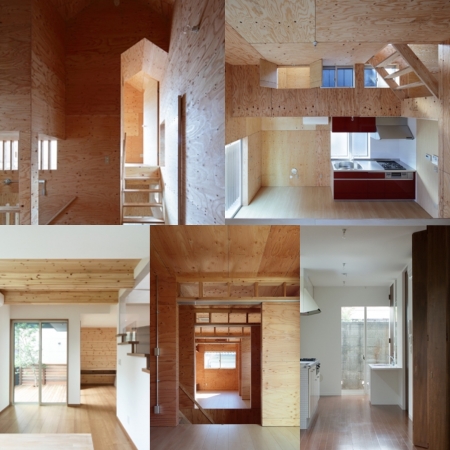人と建築をダイレクトにつなげるルール
人の気分と建築をつなげてみようと思い、建築は物だから人がいなくても存在することはできるが、建築は人が使い、なおかつ入り込む物だから、人がいてはじめて建築としての価値が出る部分もあり、そこを気分を媒介にして人と建築をつなぐという観点で構築してみようと思う。
その時に人と建築をつなぐルールを設定してみた。それは、その時の気分によって人が自分の居場所を選択し、そうすることによって建築の見え方が決まる、というもので、気分によってその都度ちがう見え方の建築が出現する。
このルールによって、人の気分と建築の見え方がダイレクトにつながり、それは人と建築をダイレクトにつなげることになる。
では、もっと具体的に言うと、人が気分によって自分の居場所を選択した場合、プランが不整形ならば、居場所によって建築の見え方は変わる。ただ単にプランを不整形にするのは誰にでもできることなので、肝心なのは、気分による居場所の選択の仕方であり、それには気分と同じように変化するものを用いることになる。
"Rules that directly connect people and architecture"
I wanted to connect people's moods with architecture, and since architecture is a thing, it can exist without people, but since architecture is something that people use and enter, the part where the value of architecture comes out only when there are people. There is also, and I will try to build it from the perspective of connecting people and architecture through mood.
At that time, I set a rule that connects people and architecture. That is, a person chooses his or her place of residence according to the mood at that time, and the appearance of the architecture is determined by doing so, and an architecture with a different appearance appears each time depending on the mood.
By this rule, the mood of the person and the appearance of the architecture are directly connected, which directly connects the person and the architecture.
So, more specifically, if a person chooses his or her location according to his or her mood, and if the plan is irregular, the appearance of the architecture will change depending on the location. Anyone can simply make a plan irregular, so the point is how to choose a place to stay according to your mood, and you will use something that changes in the same way as your mood.


